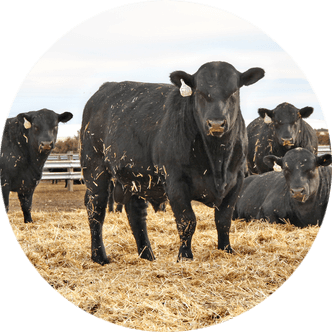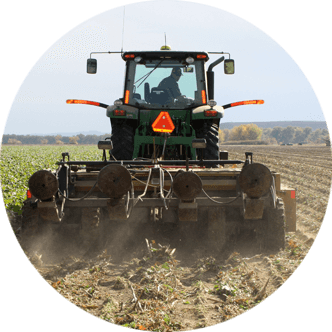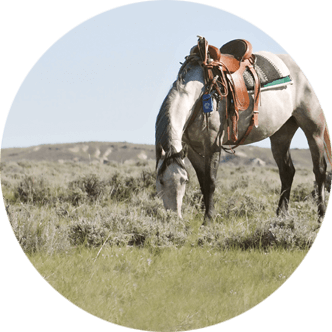WGFD releases 2025 hunting forecast
As summer’s warm embrace leaves on the crisp autumn breeze and the bright green landscape blushes with hints of amber, crimson and gold, residents and visitors alike will head for Wyoming’s vast wilderness in pursuit of one of the Cowboy State’s best offerings – wildlife.
With hunting season getting started, the Wyoming Game and Fish Department (WGFD) rolled out its 2025 hunt forecast, which provides a comprehensive breakdown of big and small game outlooks across the state’s eight regions.
Elk
Wyoming remains one of the premier states to harvest elk, and with nearly all regions across the state at or above objective, WGFD predicts high success for elk hunters this year.
The Jackson region is home to one of the stateʼs most robust elk populations, boasting four large herds which total over 16,000 elk.
WGFD notes elk in this region remain at objective levels with steady bull-to-cow ratios, and harvest success will depend heavily on snowfall and weather conditions. The department also reminds hunters they must secure permission slips to hunt the National Elk Refuge and that chronic wasting disease (CWD) testing is required in Hunt Areas 75 and 77.
In addition, the Pinedale region manages nearly 10,000 elk across three major herds. WGFD reports healthy populations in the area will likely result in excellent opportunities for hunters this fall.
Up north in the Cody region, WGFD says hunters can expect another strong season with thriving herds and solid calf recruitment. Specifically, the Cody herd is over objective, which has prompted an expanded cow elk season and more licenses issued.
“Hunt areas are at or slightly above objectives, and managers have set liberal hunting seasons to encourage antlerless elk harvest,” WGFD states. “In two hunt areas – 123 and 129 – there continues to be a Type 8 License allowing hunters the opportunity to purchase an unlimited number of cow/calf elk licenses valid only on private land. Hunters were successful with these licenses in 2024.”
Further, WGFD notes hunters with limited-quota tags in the Big Horn Mountains should have plenty of opportunities to harvest an elk, though access on private lands outside the forest must be arranged in advance.
Strong harvest is also predicted for the Casper region, where limited-quota areas continue to offer excellent bull quality.
WGFD says Type 2 and 3 licenses will provide solid chances at younger bulls this season, while unlimited Type 8 Licenses remain available in multiple hunt areas. However, hunters are urged to secure private land access before buying.
Healthy populations across Lander, Laramie and Green River will also provide widespread hunting opportunities for hunters.
WGFD notes, although Green River saw a reduction in licenses issued based on past harvest success, bull hunting in the area should remain solid.
Mule deer
Mule deer populations across the state of Wyoming have taken a major hit in recent years due to hard winters, ongoing drought, disease and depredation.
Severe winter conditions in 2022-23 hit western Wyoming’s Wyoming Range Herd especially hard, significantly reducing populations.
As this herd continues to recover, hunters in the Pinedale, Green River and Jackson regions can expect fewer deer overall, tough hunting conditions in general areas and conservative seasons in place.
WGFD notes the Sublette herd of the Pinedale region and the South Rock Springs herd of the Green River region fared better than their counterparts in terms of winter losses and may offer slightly better opportunities for hunters this fall.
While overall numbers of mule deer in the Casper region are also low, WGFD says buck ratios remain strong, which will provide good opportunities for hunters in limited-quota areas and on private lands. However, general license hunters on public land should anticipate lower success.
“In the Black Hills, the season will again be open Nov. 1-20, with antlered deer hunting only,” WGFD reports. “Hunters who have drawn a license in conservatively-managed, limited-quota areas should see good buck ratios with modest trophy potential. In Hunt Areas 10, 22, 34 and 89, most prime-age, mature bucks don’t grow large antlers compared to mule deer in other parts of the state. However, these herds are managed for good numbers of older-aged bucks and produce some good deer each year.”
Additionally, mule deer herds in the Lander region have continued to struggle with reduced fawn recruitment, resulting in below-objective numbers. Antler point restrictions remain in place near Lander and Rawlins, and most opportunities will be for young bucks.
Mild winter conditions helped improve mule deer survival in the Laramie region, but populations remain below objectives. CWD prevalence is rising, especially in the Goshen Rim herd, which is now near 39 percent.
WGFD reminds hunters Hunt Area 70 requires mandatory CWD testing.
While most mule deer herds in the Cody region are still below objective, WGFD says hunters should find conditions in this region slightly better than in 2024. Season changes this year include a three-point antler restriction in Hunt Areas 50 and 53 and extended general seasons in Hunt Areas 105, 106 and 110-114.
White-tailed deer
Small white-tailed deer populations exist in some riparian zones of the Pinedale region, and general season hunters have opportunities across all hunt areas. A limited quota of 50 licenses will also allow white-tail harvest in Hunt Areas 138- 140 and 142-143.
In the Casper region, white-tailed deer populations are rebounding from epizootic hemorrhagic disease (EHD) outbreaks in 2021-22, particularly around Casper and Douglas.
WGFD notes generous hunting seasons are in place to prevent overgrowth, and hunters should remember most whitetails in the area reside on private land, with the Black Hills offering the most notable public opportunities.
Additionally, white-tailed deer can be found around Dubois, Lander, Riverton and Jeffery City, where hunting seasons remain liberal. WGFD says hunters can expect results similar to last year.
In the Jackson region, small white-tail populations exist along rivers, and additional limited-quota opportunities are available on the National Elk Refuge where CWD testing is mandatory.
In the Sheridan region, white-tailed deer are rebounding after EHD and bluetongue outbreaks. Liberal seasons continue to help manage populations, especially on private lands where most whitetails reside. WGFD says hunters should note CWD prevalence often exceeds 30 percent of this region’s whitetail herds.
Moose
While moose remain limited in number across the state of Wyoming, populations have seen improvement in several key areas in recent years.
WGFD notes, overall, moose hunters in the Cowboy State will likely be successful this year, especially those who draw coveted licenses.
According to the WGFD report, the Sublette herd of the Pinedale region boasts one of the largest Shiras moose populations in North America. The herd remains stable and has seen slight increases in recent years, with a management focus on maintaining trophy-quality bulls.
WGFD notes the Sublette herd’s winter objective is 1,500 animals, and for 2025, 140 bull and five antlerless licenses were issued. Hunter success in the region has averaged 92 percent in recent years and should remain high.
WGFD further notes moose in the Big Horn Mountains of the Sheridan region are thriving, with a healthy number of mature bulls. Quotas were adjusted slightly in 2025 to reflect the state’s 90-to-10 resident to non-resident split, and hunters fortunate enough to draw a license can expect success.
Moose numbers in the Cody region are trending upward, and WGFD suspects hunters will have good opportunities for a successful harvest this season.
In Laramie, the Snowy Range herd continues to provide excellent opportunities for hunters, with high harvest success and strong bull ratios. WGFD says hunters drawing licenses here can expect a rewarding season with reliable success rates.
For the northwest part of the state, the WGFD report notes moose populations in the Lander and Jackson regions remain at or below-desired levels and license numbers are limited. In the Dubois area, moose counts continue to be historically low.
Bison
The Jackson region offers the only bison hunting in the state of Wyoming, and the herd is currently within its population objective, according to WGFD.
Harvest success has varied widely from year to year depending on the weather and herd movement. In fact, WGFD reports in 2023 hunters only saw a 39 percent success rate, but this jumped dramatically to 95 percent in 2024.
“In general, recent trends by which mild weather and aversion to hunting pressure on the National Elk Refuge have resulted in delay or lack of movement from Grand Teton National Park into the open hunt area on the refuge,” WGFD says. “These conditions make it difficult to achieve harvest, often with an extremely limited number of days where bison are available for harvest on the refuge, if at all.”
“Some bull hunting occurs on national forest lands, but bison availability there is intermittent and low, and access can be challenging,” the department continues. “For this reason, license holders are encouraged to capitalize on any harvest opportunity available, as opposed to selecting for bulls only.”
Additionally, WGFD reminds those who plan to hunt on the National Elk Refuge to obtain a permission slip. In addition, all license holders must pick up a harvest reporting card, tooth envelope and blood collection tube at the Jackson regional office before heading afield.
Check out next week’s edition of the Wyoming Livestock Roundup for the WGFD’s 2025 hunting outlook for pronghorn, Bighorn sheep, mountain goats, game birds and upland and small game.
Hannah Bugas is the managing editor of the Wyoming Livestock Roundup. Send comments on this article to roundup@wylr.net.





